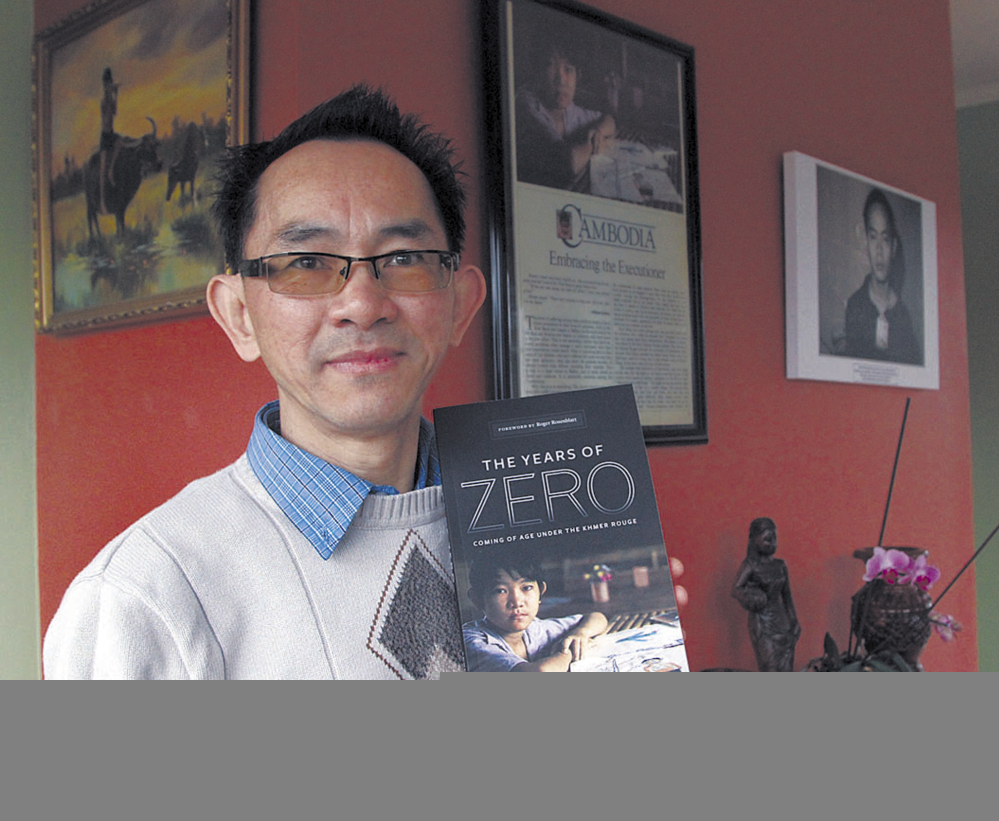LOWELL, Mass. — The moon would rise above the muddy Cambodian rice paddies just when Seng Ty thought he had nothing left in his body to pull weeds out.
The Angkar, or the “organization” as the Khmer Communist Party called itself, was merciless. The communists running the labor camp wanted children to work extra hours when there was moonlight. They would tie up children and beat them to death if they complained. So, then-9-year-old Ty would drag his exhausted body back to the fields for more work.
Then, for the first time in the day, Ty would break his silence – to the stars.
“Even with those children who were sleeping next to me and eating with me, I couldn’t communicate,” Ty said of the fearful atmosphere at the camp. “The stars were the only things I could tell what happened,” Ty said. “I pretended (the bright star) was my mother and she was watching and guiding me.”
He would vow to the stars that he would survive – and, one day, would tell the world what he went through in the killing fields where children’s corpses floated in the canals.
Nearly four decades later, Ty kept his promise by publishing a book: “The Years of Zero, Coming of Age Under the Khmer Rouge.”
Ty, a 46-year-old guidance counselor at Stoklosa Middle School in Lowell, was only 8 when the Khmer Rouge tortured his father to death. His mother would soon die from overwork, followed by the deaths of seven of his 10 brothers and sisters who were tortured, starved or fell ill.
As an orphan, he ended up in the agricultural labor camp near the Thailand border. Standing in the ankle-deep water that filled the rice paddies, Ty would tend the fields from sunrise to sundown. The Angkar, who hated intellectuals, would often beat Ty for being light-skinned and looking like a rich boy.
Living on just two bowls of rice a day, many children fell ill and died. The Angkar would throw their bodies into irrigation ditches.
Ty would collect anything alive, from insects to frogs, and hide them in the field. Sometimes, the Angkar would catch him sneaking out to collect the food at night and beat him up in front of other children. But Ty didn’t stop hiding food.
“For me, at the time, (I felt) I would rather die with my stomach full of food,” Ty said.
Ty was freed from the labor camp in 1979 when Vietnamese forces invaded Cambodia. After living on the streets of Phnom Penh and in a refugee camp in Thailand, Ty would find his permanent home in Massachusetts in 1982 when Marlena Brown, a preschool teacher and the wife of a former diplomat from Amherst, decided to adopt the 14-year-old boy whom she saw in a photograph that had appeared in Time magazine featuring the “Children of War” earlier that year.
Ty had tried to put together his stories into a book before. In “Out of the Killing Fields,” which he self-published in 2005, he explained how the Khmer Rouge’s brutal regime destroyed his family and devastated his homeland. Ty only made a few copies of the book, however, knowing he needed to polish the writing.
In “The Years of Zero,” Ty focused on events as an eyewitness. He wanted readers to feel like they were in the Cambodian jungles with him.
He knew he succeeded when he heard people say how the book drew them into the story. Seeing a photo of a 13-year-old Ty on the cover of the book, his sixth- and eighth-grade students asked for copies, Ty said.
Cambodian children know little about what their parents went through during the Khmer Rouge regime because many survivors find it too painful to discuss, Ty said. He said there are common threads between that genocide and 21st-century terrorism, including brainwashing, and that it’s important for young generations to hear firsthand accounts of genocide survivors.
For Ty, writing the book became a mission. More than three decades after his ordeal, he found no book publishers interested in his stories. So, he turned to self-publishing.
“It doesn’t matter how it’s published. I’m going to find my way,” Ty said.
Send questions/comments to the editors.



Success. Please wait for the page to reload. If the page does not reload within 5 seconds, please refresh the page.
Enter your email and password to access comments.
Hi, to comment on stories you must . This profile is in addition to your subscription and website login.
Already have a commenting profile? .
Invalid username/password.
Please check your email to confirm and complete your registration.
Only subscribers are eligible to post comments. Please subscribe or login first for digital access. Here’s why.
Use the form below to reset your password. When you've submitted your account email, we will send an email with a reset code.